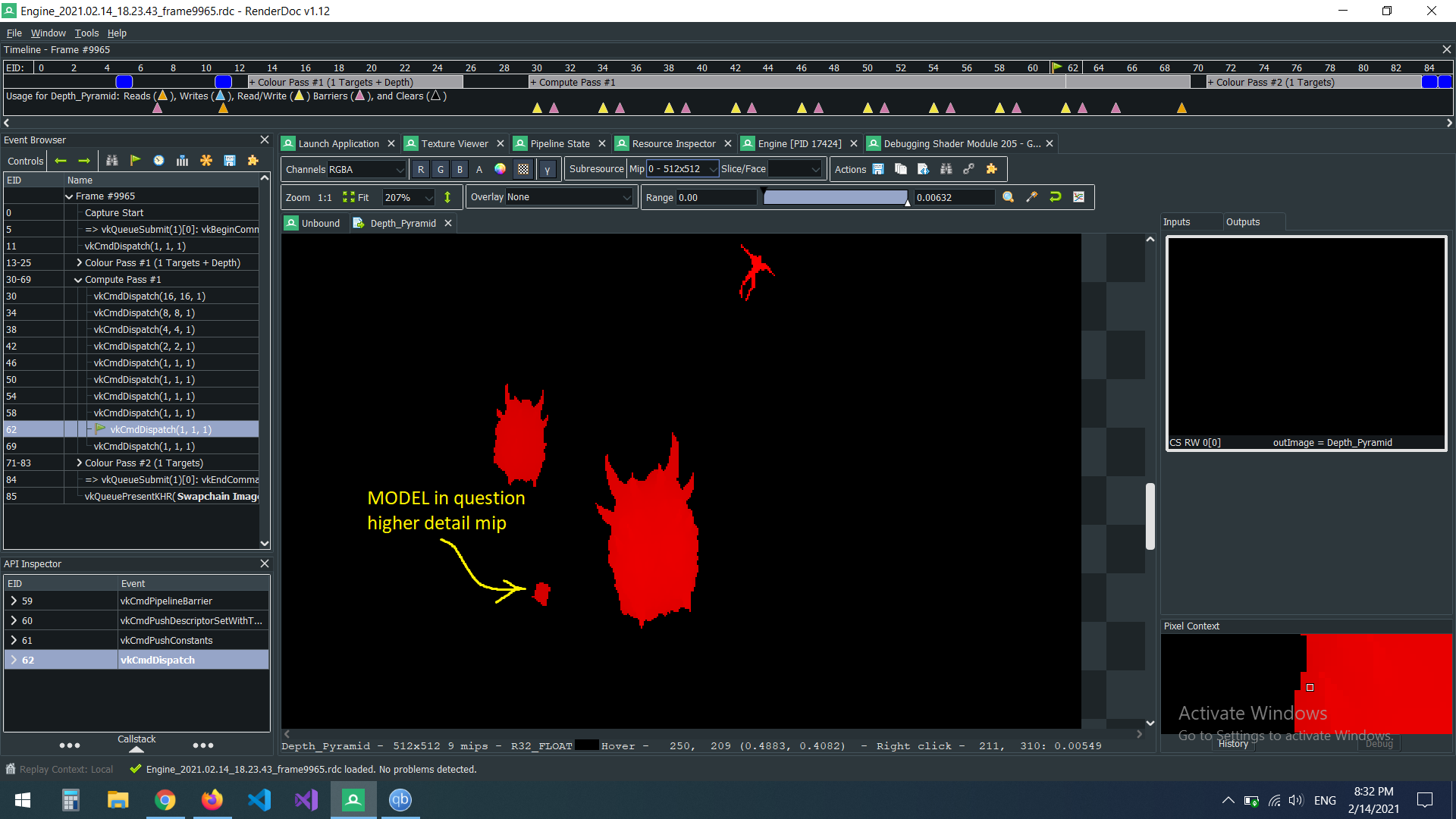In your renderer, how do you define projWidth? Typically znear shouldn't affect the projection results, but if you define projWidth/projHeight as the view-space bounds of the camera slice at znear (so the size of the front clipped plane of the viewing frustum), then yeah - you'd need to divide.
I prefer the formulation where projection width/height define the size of the image plane at Z=1; this definition doesn't depend on znear, which means you can vary znear to adjust for clipping without changing the projection math.
Hello Zeux ! I've been dealing with a bug in the "fast/compact" sphere projection

Basically , I was getting occlusion culling on "the object in question" but only in a "Bermuda Tiangle" region, and it shouldn't have happen because it was visible. The issue is produced by the quick and dirty projection, namely it lacks the 1/zNear as a factor:
Took me a while to figure out :) Cheers !